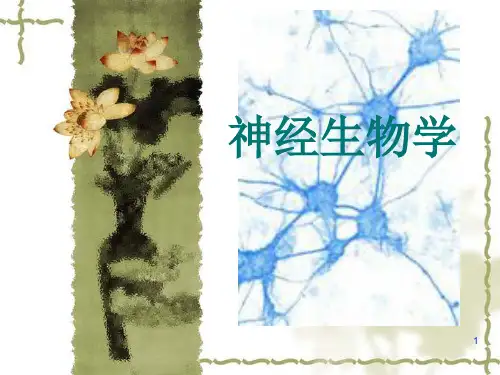神经元和神经胶质细胞2.ppt
- 格式:ppt
- 大小:7.02 MB
- 文档页数:40
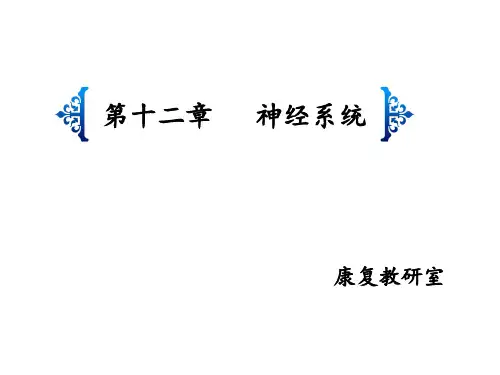
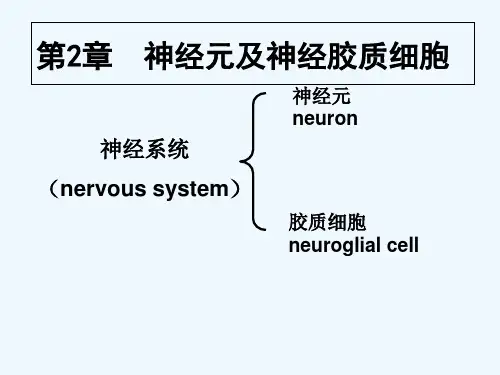
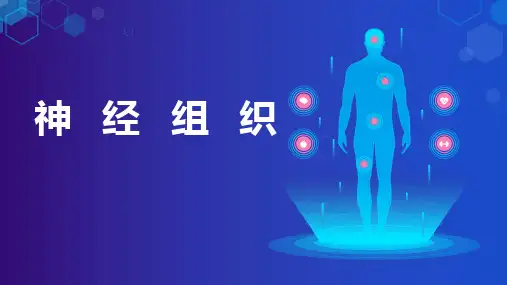
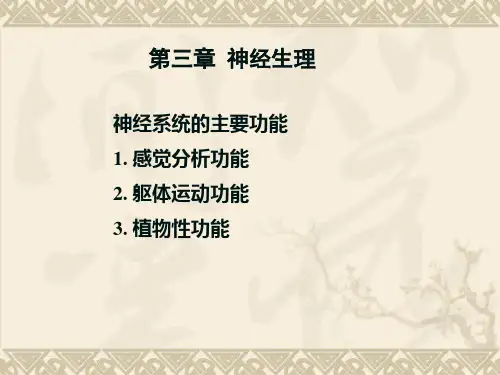




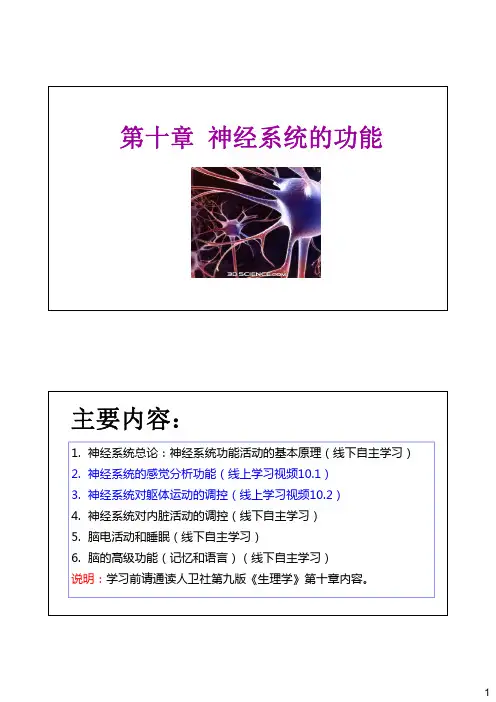
第十章神经系统的功能 1.神经系统总论:神经系统功能活动的基本原理(线下自主学习)2.神经系统的感觉分析功能(线上学习视频10.1)3.神经系统对躯体运动的调控(线上学习视频10.2)4.神经系统对内脏活动的调控(线下自主学习)5.脑电活动和睡眠(线下自主学习)6.脑的高级功能(记忆和语言)(线下自主学习)说明:学习前请通读人卫社第九版《生理学》第十章内容。
主要内容:1.神经元和神经胶质细胞2.突触传递过程、影响因素3.神经递质与受体4.突触的中枢抑制与易化总论包括:外周神经系统(PNS)中枢神经系统(CNS)神经节(ganglion)图示为位于脊髓两旁的初级躯体感觉传入神经节:背根神经节(dorsal root ganglion, DRG)•定义:功能相同的神经元胞体在中枢以外的周围部位集合而成的结节状结构。
•按生理和形态的不同,神经节可分为:1)脑脊神经节(感觉神经节):在功能上属于感觉神经元,在形态上属于假单极或双极神经元。
2)植物神经节:包括交感和副交感神经节。
位置?(交感神经节:脊柱两旁;副交感神经节:所支配器官的附近或器官壁内)中枢神经系统的功能分级1)脊髓水平2)低位脑水平(皮层下水平)3)高位脑水平(皮层水平)1)脊髓水平基本的运动反射(肌牵张反射,屈肌反射和对侧伸肌反射,基本的步态反射。
) 发汗反射,血管张力,胃肠道反射排尿,排便反射2)低位脑水平(皮层下水平)延髓脑桥中脑下丘脑丘脑小脑基底神经节3)高位脑水平(皮层水平)•1. The patients lost their ability to solve complex problems.•2. They became unable to string together sequential tasks to reach complex goals.•3. They became unable to learn to do several parallel tasks at the same time.•4. Their level of aggressiveness was decreased, sometimes markedly, and, in general, they lost ambition.• 5. Their social responses were often inappropriate for the occasion, often including loss of morals.• 6. The patients could still talk and comprehend language, but they were unable to carry through any long trains of thought, and their moods changed rapidly from sweetness to rage to exhilaration to madness.•7. The patients could also still perform most of the usual patterns of motor function that they had performed throughout life, but often without purpose.前额叶切除(Prefrontal lobotomy )不能处理多任务和解决较复杂的问题没有进取心和抱负社交能力下降,或者社交恐惧不能进行有效的逻辑推理和思考,情绪剧烈波动能进行日常的运动功能,但通常没有目的性。
